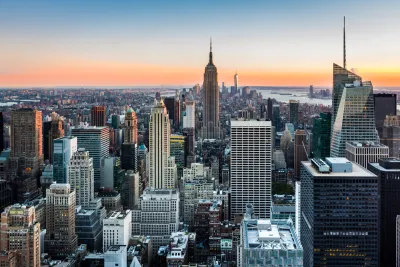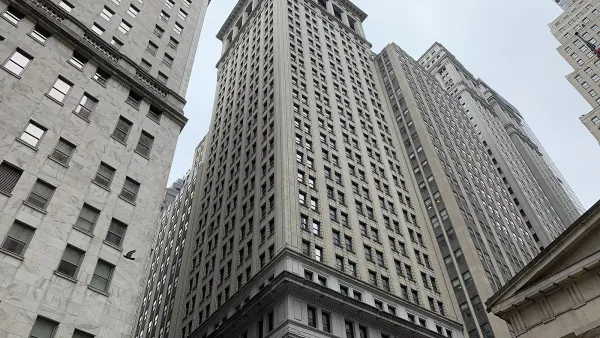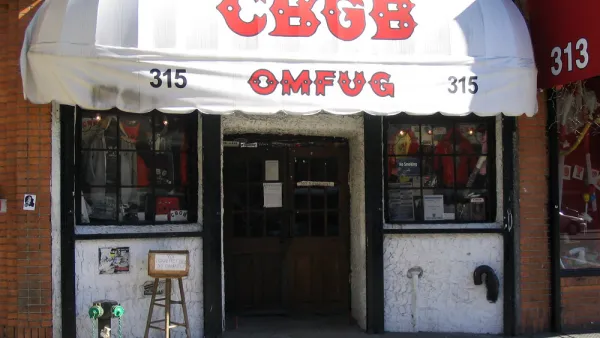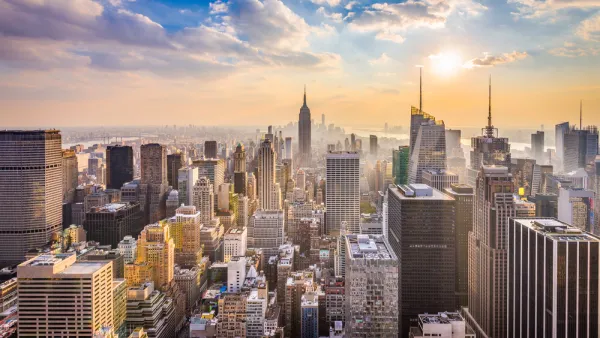With 90 percent of its usual commuters still working from home and a full return to the office highly unlikely, what will become of New York City's towering office buildings?

As companies evaluate the effects of work-from-home policies on their productivity and their bottom lines, there's no doubt that a sizable percentage of remote workers will continue working from home, and many of Manhattan's massive office buildings will "probably never be full again." With companies like Spotify, Twitter, and SalesForce announcing drastic reductions in their in-person operations, writes Matthew Haag in the New York Times, the landscape of Manhattan real estate will change drastically, even after the pandemic is over.
Manhattan is, writes Haag, "an island whose economy has been sustained, from the corner hot dog vendor to Broadway theaters, by more than 1.6 million commuters every day." At the moment, "about 90% of Manhattan office workers are working remotely," with less than half estimated to return to the office by September of this year. "The consequences for New York could be far-reaching, not just for the city’s restaurants, coffee shops and other small businesses, but for municipal finances, which depend heavily on commercial real estate." The loss of daily commuters "has caused the market value of commercial properties that include office buildings to plunge nearly 16 percent during the pandemic, triggering a sharp decline in tax revenue that pays for essential city services, from schools to sanitation."
Others see a light at the end of the tunnel. "The surge in available commercial real estate has actually been a boon for some new businesses that have been able to find spaces at rents that are lower than they were before the pandemic." Brian S. Waterman, executive vice chairman of commercial real estate services firm Newmark, expressed optimism that New York offices would see a "much fuller occupancy" by this fall. Some leading tech companies have also added to their footprint in the city, with Facebook securing 1 million square feet of office space and Apple adding two floors to their Midtown offices. A group of developers and landlords is also calling for the city and state to change zoning rules to allow the adaptive reuse of office buildings into apartments to make more efficient use of the space and alleviate the city's housing shortage.
FULL STORY: Remote Work Is Here to Stay. Manhattan May Never Be the Same.

Analysis: Cybertruck Fatality Rate Far Exceeds That of Ford Pinto
The Tesla Cybertruck was recalled seven times last year.

National Parks Layoffs Will Cause Communities to Lose Billions
Thousands of essential park workers were laid off this week, just before the busy spring break season.

Retro-silient?: America’s First “Eco-burb,” The Woodlands Turns 50
A master-planned community north of Houston offers lessons on green infrastructure and resilient design, but falls short of its founder’s lofty affordability and walkability goals.

Test News Post 1
This is a summary

Analysis: Cybertruck Fatality Rate Far Exceeds That of Ford Pinto
The Tesla Cybertruck was recalled seven times last year.

Test News Headline 46
Test for the image on the front page.
Urban Design for Planners 1: Software Tools
This six-course series explores essential urban design concepts using open source software and equips planners with the tools they need to participate fully in the urban design process.
Planning for Universal Design
Learn the tools for implementing Universal Design in planning regulations.
EMC Planning Group, Inc.
Planetizen
Planetizen
Mpact (formerly Rail~Volution)
Great Falls Development Authority, Inc.
HUDs Office of Policy Development and Research
NYU Wagner Graduate School of Public Service




























